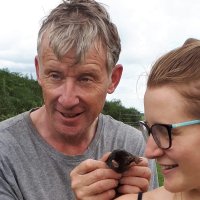
Ian Carter
@IanCarter67
Naturalist and Author: Rhythms of Nature | Human, Nature | The Red Kite | The Red Kite’s Year | The Hen Harrier’s Year | Coming soon: Wild Galloway
15-05-2020 09:08:46
17,4K Tweets
7,5K Followers
4,2K Following












@IanCarter67
Naturalist and Author: Rhythms of Nature | Human, Nature | The Red Kite | The Red Kite’s Year | The Hen Harrier’s Year | Coming soon: Wild Galloway
15-05-2020 09:08:46
17,4K Tweets
7,5K Followers
4,2K Following










